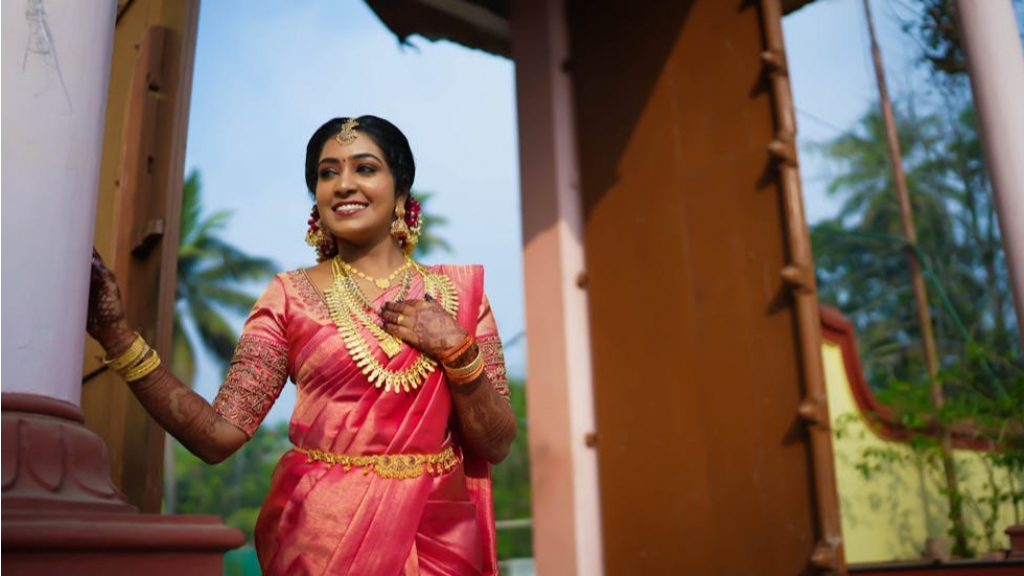Ethnic wear, a term used for traditional clothing, plays a significant role in the culture and lifestyle of individuals across India. From weddings to festivals, ethnic wear is an essential part of every occasion. Whether you are looking for a graceful saree, an elegant lehenga, or a classy kurta, choosing the perfect ethnic outfit can be a daunting task. But, with the right guidance and tips, you can confidently select the perfect attire for every event.
This blog will guide you through the process of choosing the right ethnic wear, with a special reference to the trend exhibitions that showcase the latest styles and trends. Trend exhibitions are a great source of inspiration to help you stay updated with what’s trending in the world of ethnic wear.
- Understanding Your Body Type
One of the most important factors in selecting the perfect ethnic wear is understanding your body type. Different styles flatter different body shapes, so knowing what suits you can make a significant difference in how the outfit will look on you.
Hourglass Shape: If you have an hourglass shape, almost any ethnic wear will complement your figure. A saree with a well-fitted blouse, lehengas with high waistlines, or even an anarkali suit will enhance your curves.
Pear Shape: For those with a pear-shaped body, it is best to choose ethnic wear that balances your proportions. A-line lehengas, straight-cut sarees, and kurta sets with flared pants are great options.
Apple Shape: If you have an apple-shaped body, it is ideal to wear clothing that creates the illusion of a defined waistline. Choose sarees with a slightly lower waistline or opt for straight-cut salwar kameez or lehengas that add structure.
Rectangle Shape: For rectangular-shaped bodies, try wearing ethnic wear that creates curves, such as flared lehengas, peplum kurtas, and sarees with voluminous pleats.
Knowing your body type will help you make the right choices when selecting the right ethnic ensemble, and ensure that you feel confident and comfortable.
- Consider the Occasion
Ethnic wear is typically chosen based on the occasion. Whether it’s a wedding, festival, or casual gathering, each event requires a specific type of attire.
Weddings: Weddings are the most elaborate occasions, and people often wear luxurious ethnic wear, such as bridal lehengas, sarees, or anarkalis. Choose a rich fabric like silk, brocade, or velvet, and go for embellishments like zari, sequins, or embroidery.
Festivals: For festivals such as Diwali or Holi, you can choose lighter ethnic wear such as cotton sarees, kurti sets, or lehengas with minimal embellishment. These are comfortable and still festive.
Casual Gatherings: For smaller gatherings or casual events, you may want to go for something less elaborate, like a simple cotton kurta with leggings or a salwar kameez set. These outfits can be both stylish and comfortable.
Formal Occasions: For more formal ethnic wear, a sophisticated saree in a neutral color or a tailored salwar kameez with an elegant dupatta is a good choice. Opt for understated elegance rather than bold or excessive embellishments.
Knowing the event will help you narrow down your choices and select something that fits the formality and mood of the occasion.
- Choosing the Right Fabric
The fabric of ethnic wear can significantly influence its comfort and appearance. The climate and season are important factors when selecting the right fabric for your ethnic wear.
Silk: A luxurious and elegant fabric, perfect for weddings and formal events. Silk is breathable and has a shiny finish that adds glamour to your outfit.
Cotton: A breathable, light, and comfortable fabric, cotton ethnic wear is ideal for daytime or casual wear, especially during the summer months. Cotton is perfect for kurtis, salwars, and sarees.
Georgette and Chiffon: These are flowy, lightweight fabrics, ideal for occasions such as parties or evening wear. These fabrics work well for sarees and lehengas, offering a smooth and elegant drape.
Velvet: Rich and warm, velvet is an excellent choice for winter weddings or evening events. It gives an opulent look, especially in deep jewel tones like emerald, navy, or burgundy.
Linen: A summer-friendly fabric that is ideal for hot climates. It is light and breathable, perfect for casual ethnic wear.
The right fabric can not only enhance the appearance of the ethnic wear but also ensure you stay comfortable throughout the event.
- Colour Palette
Choosing the right color is crucial when selecting ethnic wear. The color of your outfit can reflect your mood, occasion, and even your skin tone. Here are some tips on selecting the right color:
Bright Colors: Bright hues such as red, yellow, and orange are often associated with celebrations and festivals. If you are attending a wedding or festival, go for bold and vibrant shades.
Pastels: Soft shades like powder blue, mint green, and blush pink are perfect for daytime events, brunches, or a more relaxed atmosphere.
Neutrals: Neutral colors such as beige, ivory, and white are ideal for formal events, offering a classic and sophisticated look.
Jewel Tones: Deep colors like emerald, sapphire, and ruby are perfect for evening wear or winter weddings.
Monochromatic Looks: If you are unsure about pairing multiple colors, consider a monochromatic ethnic wear look. A single color from head to toe can create an effortlessly elegant and cohesive look.
Consider your personal preferences and the theme of the event when selecting the color of your ethnic wear.
- Choose for Customization
One of the most important tips for choosing the perfect ethnic wear is opting for customization. While ready-made outfits can be convenient, getting your outfit custom-made ensures a perfect fit and allows you to add a personal touch. You can choose the fabric, color, design, and embroidery to create a one-of-a-kind outfit that reflects your style.
- Pay Attention to Embellishments and Embroidery
The embroidery and embellishments on ethnic wear can elevate the overall appearance of the outfit. Ethnic wear often includes intricate work like zari, zardozi, sequins, mirror work, or thread embroidery. When selecting an outfit, consider the level of embellishment:
Light Embellishments: For daytime or casual events, choose ethnic wear with minimal embellishments, such as a simple printed saree with light embroidery or a plain kurta with subtle detailing.
Heavy Embellishments: For weddings or evening events, you can choose outfits with heavy embellishments. Lehengas, sarees, and anarkalis often feature heavy zari work, sequins, and crystals to create a stunning look.
7. Accessorizing Your Ethnic Wear
Finally, accessorizing your ethnic wear is just as important as the outfit itself. The right accessories can enhance your ethnic look and take it to the next level.
Jewelry: Traditional ethnic wear pairs beautifully with jewelry such as statement earrings, maang tikka, necklaces, and bangles. Choose jewelry based on the level of embellishment of your outfit.
Footwear: Footwear can make or break your ethnic look. Pair your outfit with traditional footwear such as juttis, mojaris, or sandals. Ensure that the shoes complement the style and color of your ethnic wear.
Clutches and Bags: Choose a clutch or handbag that matches your outfit. Handcrafted clutches with embroidery or embellishments are ideal for weddings or formal occasions, while more subtle bags can be used for casual events.
Conclusion
Choosing the perfect ethnic wear is about understanding your body type, occasion, fabric, color preferences, and personal style. Whether you choose a classic saree, an elegant lehenga, or a chic kurti set, the key to a great look is selecting what makes you feel confident and comfortable. By attending trend exhibitions, you can stay ahead of the curve and discover new designs and ideas that match your tastes and preferences.
So, the next time you’re preparing for an event, follow these steps to ensure you choose the perfect ethnic wear that not only complements your body but also enhances your personal style.
Image credits: pexels The Images in the blog are used for Representational purpose only




Share this via
Or copy link